Key takeaways:
- Floral arrangements evoke emotions and tell stories through color, texture, and balance.
- Seasonality and symbolism of flowers enhance the aesthetic and meaning of arrangements.
- Techniques like focal points, layering, and height variation significantly impact the overall design.
- Personal experiences and creativity in presentation can elevate floral arrangements and connect deeper with emotions.
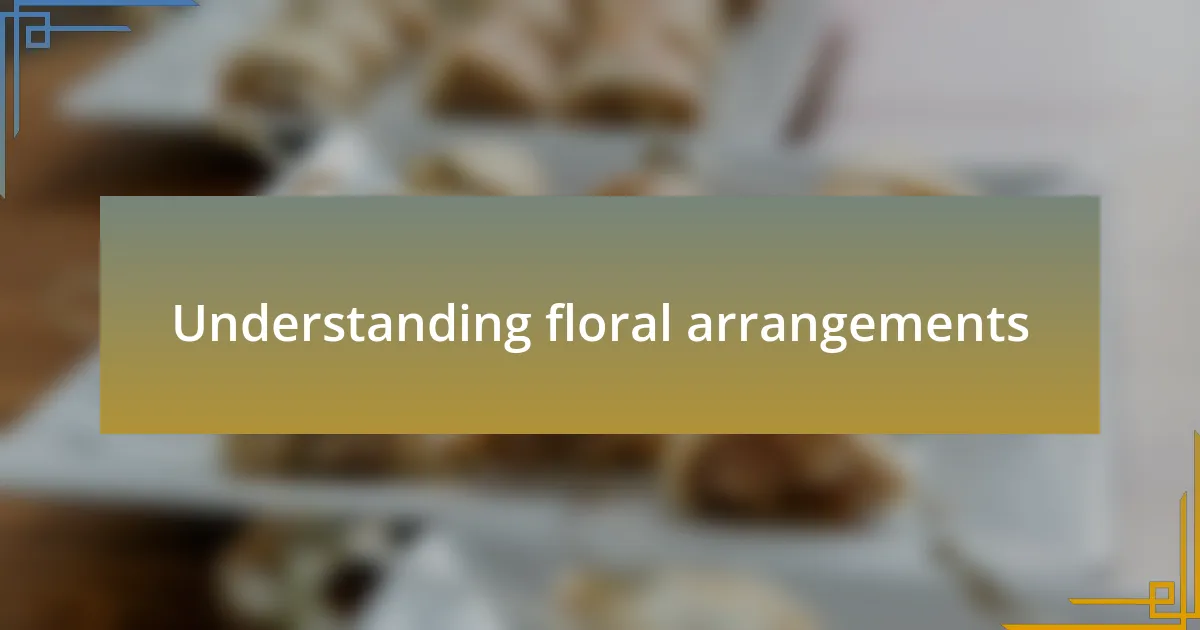
Understanding floral arrangements
Floral arrangements go beyond just putting flowers together; they tell a story and create an atmosphere. I remember the first time I arranged flowers for a friend’s wedding. The moment I stepped back and saw how the colors and shapes interacted, it struck me how much emotion a simple bouquet can convey. Isn’t it fascinating how certain blooms can evoke joy or nostalgia?
When crafting an arrangement, consider the balance of your flowers. I once leaned too heavily on one color, and it felt off-kilter. I realized that a harmonious mix not only looks beautiful but also feels right; it’s like creating a visual symphony. How do you want your arrangement to make people feel?
Textures play a crucial role in floral design as well. A friend once added feathers and greenery to her arrangements, which not only added depth but also sparked conversations among guests. It made me realize that incorporating various elements can elevate your work from ordinary to extraordinary. Have you ever experienced a floral display that simply took your breath away? For me, it was all about those unique touches that make each arrangement personal.
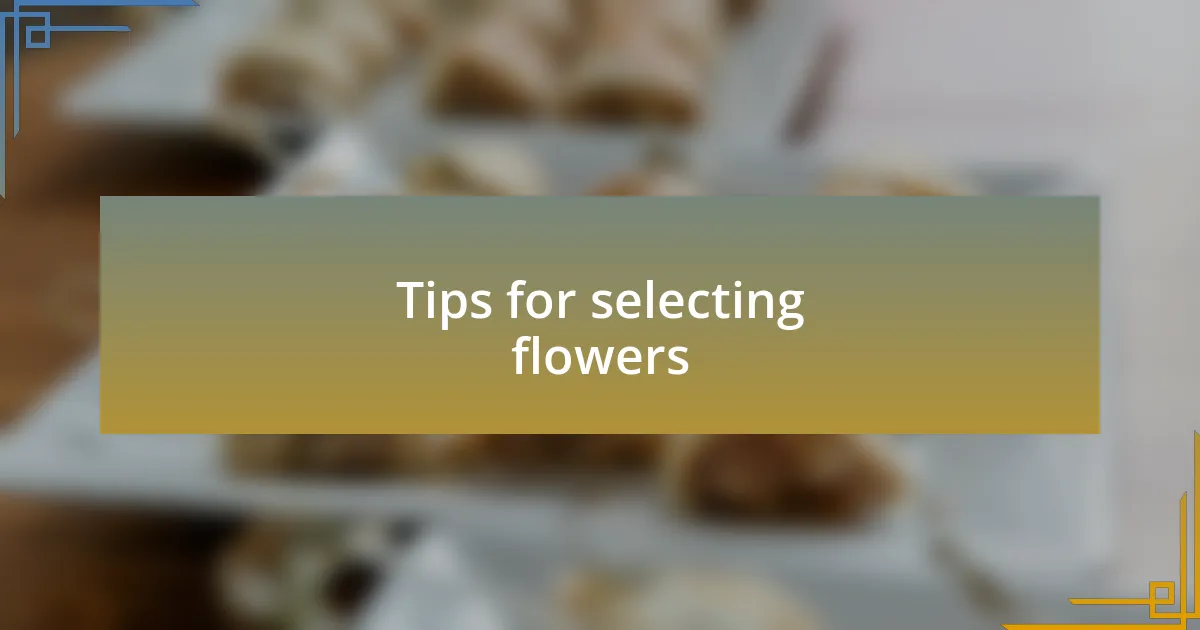
Tips for selecting flowers
When selecting flowers, think about the seasonality of your blooms. I recall planning my sister’s wedding in early spring, and we were thrilled to find peonies at the market—they were simply stunning and perfectly aligned with the season’s charm. The right flowers not only enhance the aesthetic but also tend to be fresher and more affordable. Have you ever noticed how certain flowers seem to fit perfectly with specific times of the year?
Another aspect to consider is the meaning behind various flowers. For instance, I opted for tulips in my best friend’s bouquet because they symbolize love and passion, which felt so fitting for her big day. Understanding flower symbolism can add a layer of depth to your arrangements, making them more meaningful than just a pretty collection. What emotions do you want to express through your floral choices?
Finally, don’t shy away from mixing shapes and sizes to create visual interest. In one of my arrangements, I paired tall lilies with compact roses, and the contrast genuinely made the design pop. It taught me that a little experimentation goes a long way. Have you thought about how varying the scale of flowers can enhance the overall impact of your arrangement?
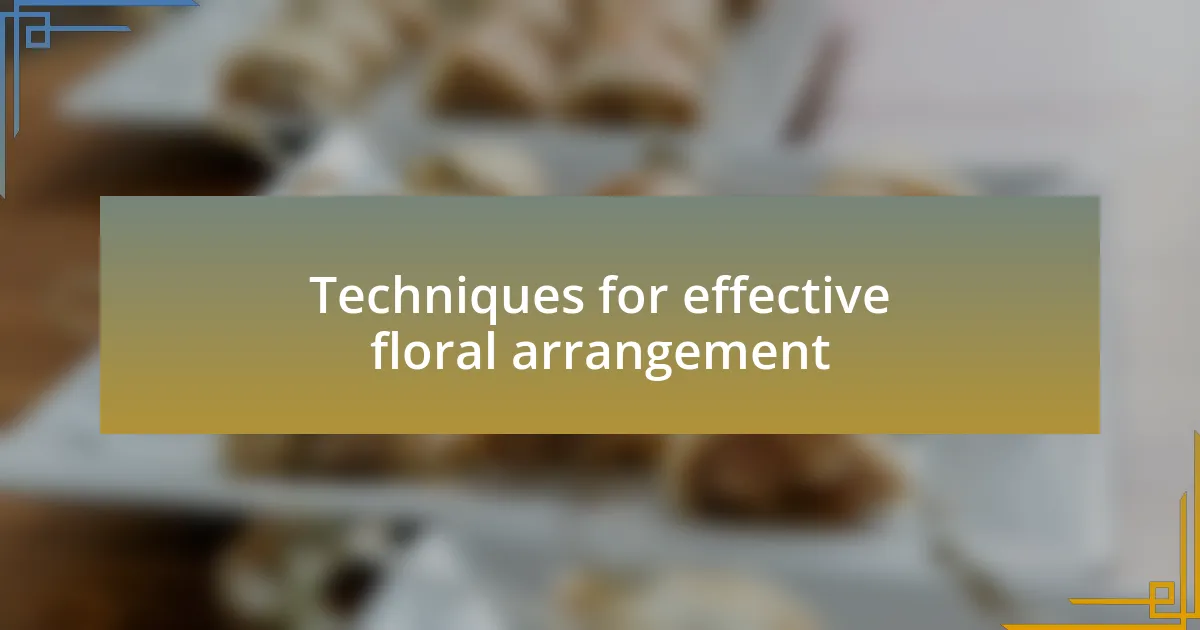
Techniques for effective floral arrangement
When it comes to effective floral arrangements, one technique that I find invaluable is the use of a focal point. I once created a centerpiece for a friend’s engagement party, featuring a striking orchid at the center surrounded by softer blooms. This not only drew the eye but also created a narrative for the arrangement. Have you ever noticed how a single standout flower can elevate an entire design?
Another technique that I’ve found helpful is layering. I remember arranging flowers for my own wedding and realized that by layering different types of greenery with my roses and hydrangeas, the bouquet achieved depth and texture that made it visually captivating. It’s fascinating how the backdrop of leaves can dramatically enhance the colors and shapes of your chosen flowers. Have you thought about how different layers can alter the perception of your arrangement?
Lastly, keeping the height variation in mind can significantly impact the overall look. For a recent event, I experimented with varying the heights of the flowers in my arrangement. The play between tall, elegant stems and short, lush blooms added a dynamic flow that felt both organic and intentional. It made me wonder—how would varying heights change the way guests perceive your floral creations?
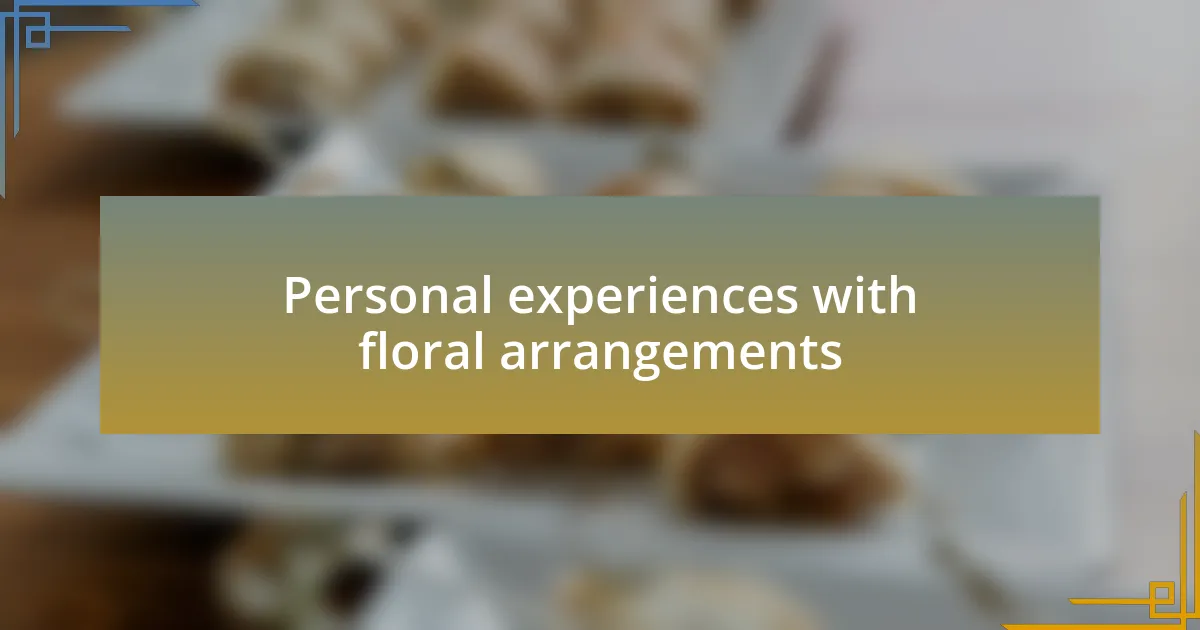
Personal experiences with floral arrangements
One of my most memorable experiences with floral arrangements was when I helped a close friend decorate for her bridal shower. We opted for a color palette of blush pinks and deep greens, and curating the flowers felt like a personal journey. As I placed the delicate peonies alongside sturdy eucalyptus, I felt a sense of fulfillment; it was as if each flower shared a story that tied back to our friendship. Have you ever felt that connection with the flowers you choose?
Another time, I experimented with using unconventional containers. For a small dinner party, I decided to arrange flowers in vintage teacups instead of traditional vases. The surprise on my guests’ faces was priceless when they saw these unique displays on the table. It made me realize that creativity in presentation can add an extra layer of charm to any arrangement. Have you thought about using everyday items to showcase floral beauty?
Once, while crafting a centerpiece for a community event, I learned the importance of seasonal flowers. I chose sunflowers and zinnias, which not only added a cheerful touch but also reflected the local harvest. The vibrant colors and textures caught the light beautifully, turning heads and sparking conversations. It’s amazing how the right combination of seasonal blooms can not only brighten a space but also create a sense of place. What seasonal flowers resonate with you, and how might they inspire your own arrangements?
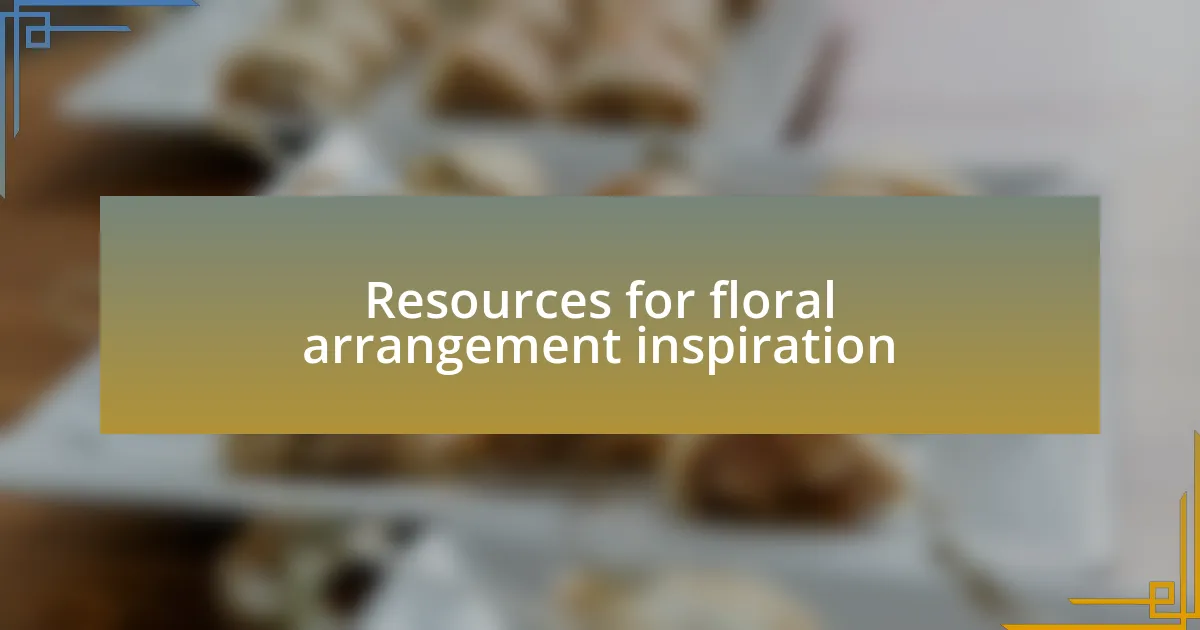
Resources for floral arrangement inspiration
When searching for floral arrangement inspiration, I often turn to platforms like Pinterest and Instagram. Just the other day, I stumbled across a post featuring an arrangement with wildflowers and soft pastels that simply took my breath away. It made me wonder: how often do we overlook the beauty of nature’s spontaneity when designing our own arrangements?
Books on floral design are another invaluable resource I rely on. One of my favorites, a classic on Ikebana, Japan’s flower arranging art, opened my eyes to the balance between simplicity and elegance. As I explored the concepts in that book, I felt an urge to bring that understated beauty into my own arrangements. How do different cultural approaches to floral art influence your style?
Lastly, visiting local florists can be a treasure trove of inspiration. I remember wandering into a charming shop and finding a stunning display of locally sourced flowers, laid out in a way that felt both intentional and organic. The florist shared her tips on combining colors and textures, sparking new ideas that I eagerly applied at home. Have you ever found unexpected inspiration in a local space? It’s these real-world connections that can breathe life into our floral creations.